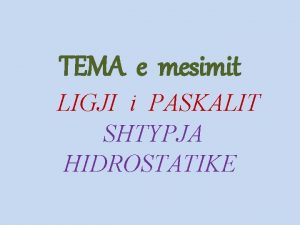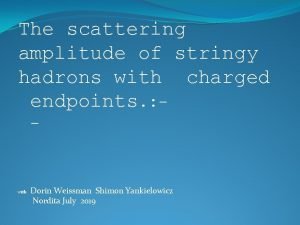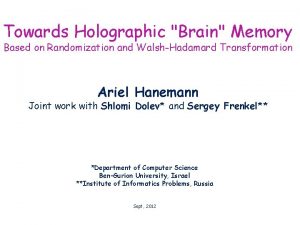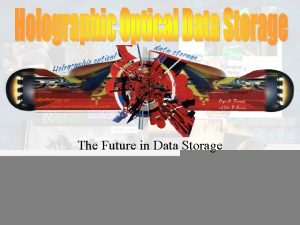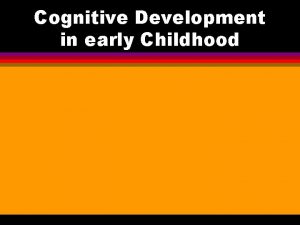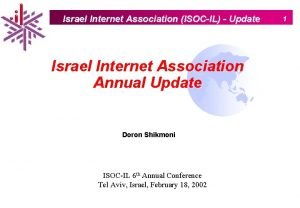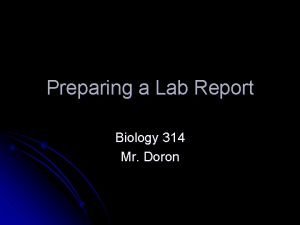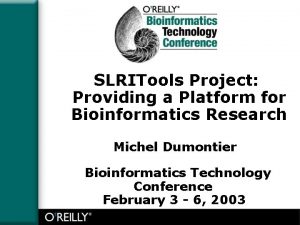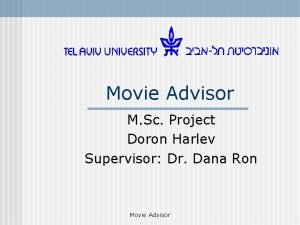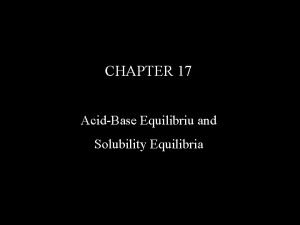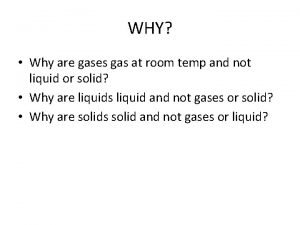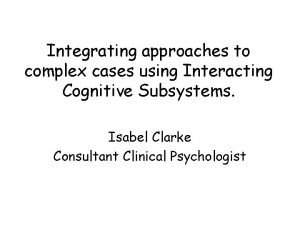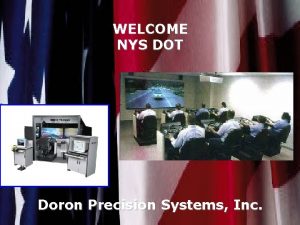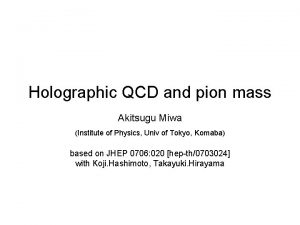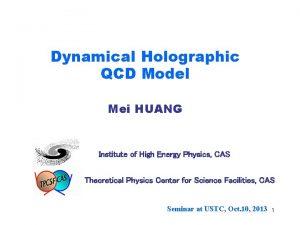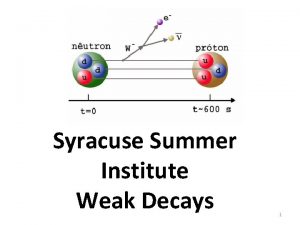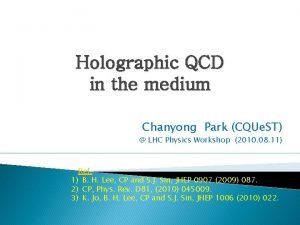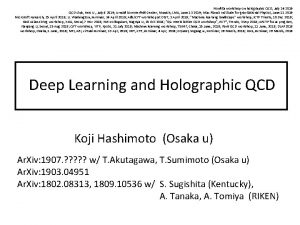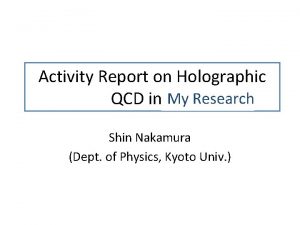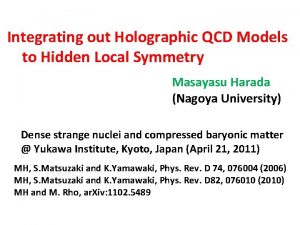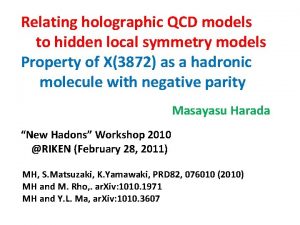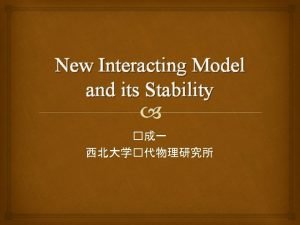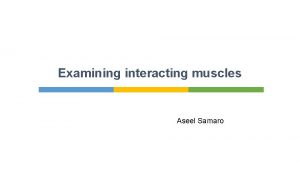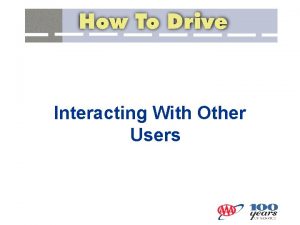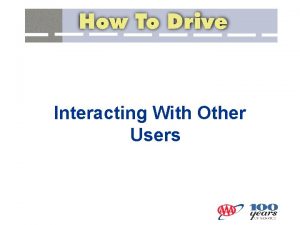Weak Interacting Holographic QCD Doron Gazit Institute for


















- Slides: 18

Weak Interacting Holographic QCD Doron Gazit Institute for Nuclear Theory University of Washington & Ho-Ung Yee ICTP, Trieste Phys. Lett. B (2008), doi: 10. 1016/j. physletb. 2008. 10. 045, ar. Xiv: 0807. 0607

Large N QCD has a dual classical theory in 5 -D? ! • Large N factorization of gauge invariant operators: • Implies a classical theory for gauge invariant operators (AKA master fields). • RG running survives the large N limit, thus the master field is a function of the energy scale: • The RG equations constrain flow in this scale • Holographic QCD is a gravitational theory of gauge invariant fields in 5 dimensions. • 5 th dimension corresponds roughly to the energy scale. 2 PANIC 08 - Weak interacting holographic QCD - Gazit & Yee

Things that we know Ad. S/CFT Duality proposal N=4 Super Yang-Mills theory in (3+1)D for Nc ∞, g. YM 0 and fixed but large is equivalent to Type IIB Supergravity in Ad. S 5×S 5 with size l¼ Mandalcena 1998 3 PANIC 08 - Weak interacting holographic QCD - Gazit & Yee

We thus expect the dual theory of QCD… • In the UV regime: highly nonlocal, corresponding to asymptotic freedom. • In the IR regime: local, corresponding to the strongly correlated QCD. • Thus, current models of Holographic QCD model the gravitational dual as a local theory. • Properties of existing models of Holographic QCD: • Chiral symmetry. • Confinement. • Explain experimental observables to 20%. 4 PANIC 08 - Weak interacting holographic QCD - Gazit & Yee

Motivation for Weak Interacting Holographic QCD • Many important processes include weak interaction and low-energy QCD. • Numerical calculation of observables from first principles QCD possible only using lattice calculations. • Weak interacting Holographic QCD will provide an additional tool for estimating Hadronic processes. 5 PANIC 08 - Weak interacting holographic QCD - Gazit & Yee

Low-energy Weak interaction SU(2)L 6 EM

How to perturb the QCD Lagrangian? Gauge Gravity • Perturbation to the Lagrangian. • Deforming boundary conditions of field near UV boundary. • Single trace operator O. • A 5 D field, such that: ato r e p o e trac ngle i s a T NO s i n o i t rba u t r e p k • A Lagrangian • Boundary conditions: weapertutbation: , r e v e How 7 PANIC 08 - Weak interacting holographic QCD - Gazit & Yee r

For a general functional perturbation of a single trace operator Witten, Yee, Marolf-Ross 8 PANIC 08 - Weak interacting holographic QCD - Gazit & Yee

Implementation The idea is general enough to implement in any Holographic Model. We demonstrated on two models: Top – Down Model: Sakai-Sugimoto Model [Sakai and Sugimoto, Witten] Bottom – Up Model: Hard/Soft Wall Model [Erlich-Katz-Son. Stephanov, Da Rold -Pomarol]. Both models lead to essentially the same results, as the 5 D gauge field includes pions and spin-1 massive bosons when we expand it in terms of 4 D modes. 9 PANIC 08 - Weak interacting holographic QCD - Gazit & Yee

Sakai-Sugimoto Model • Set-up of D 8 and branes in UV, joined at IR boundary of NC D 4 branes. • Geometrical realization of U(Nf)R×U(Nf)L U(Nf)I • The dynamics resides in the U(Nf) gauge field A(x, z). • Values near UV couple to the QCD Nöther currents. 10 N e a r U V b o u n d a PANIC 08 - Weak interacting holographic QCD -r. Gazit & Yee y

Hard/Soft Wall Model • A phenomenological model, with an artificial IR cutoff, embedded in the dilaton field. • The chiral symmetry is due to an expectation value of the bifundamental field – broken hidden symmetries. • Mesons come from the 5 D gauge fields, as well as the field X, upon KK mode expansion to 4 D. • Including non-vanishing 11 quark-mass – natural. N e a r U V b o u & Yee PANIC 08 - Weak interacting holographic QCD - Gazit n

Implementing the prescription: • For quarks with U(1) charge: • Treating the lepton current as an external current. • The current is decomposed: Sakai. Sugimoto Hard/Soft wall model 12 PANIC 08 - Weak interacting holographic QCD - Gazit & Yee

Charged Pion Decay • Treating the lepton current as an external source. d o ll m S / d r a w ft o a H e • Thus: hthere will be no 5 th t • We define the pion field so that in kinetic energy: dimension mixing term indthe • SS: e v ie h c a s i t l • As a result – u es r e • Same result as old current algebra, and without free m Sa parameters (due to the chiral symmetry)! 14 . l e PANIC 08 - Weak interacting holographic QCD - Gazit & Yee

How to calculate different reactions? • Write equation of motion for the global gauge field (i. e. the U(NF) current). • Solve it with the prescribed boundary conditions. • If you’d like pions to be involved, do it in the previous gauge fixing for Az. • For reactions that include nucleons, choose a model for baryons, and calculate baryon-pion coupling from the kinetic term, and from magnetic type of couplings: 15 PANIC 08 - Weak interacting holographic QCD - Gazit & Yee

Nucleons • Sakai-Sugimoto: • Nucleons are instantons in 5 D. We take only lowest excitation, such that spin connections can be cancelled – • Hard/Soft Wall model: • Nucleons are spin ½ doublets. Nucleon mass 16 Rho, Yee, Yi, Phys. Rev. D PANIC 08 - Weak interacting holographic QCD - Gazit & Yee Hong, 77, 014030 (2008).

Neutron b-decay Sakai-Sugimoto • With: Hard/Soft wall model • With: The axial constant is measured using the neutron beta decay 17 PANIC 08 - Weak interacting holographic QCD - Gazit & Yee

Parity non-conserving pion-nucleon coupling • First example without an external source. • We are interested in parity violating couplings of mesons to the nucleons. • To this end, we consider only charged pion-nucleon coupling. • In both models, the result in the zero q limit is identical to the current algebra result: • Still, a lot to be done! 18 PANIC 08 - Weak interacting holographic QCD - Gazit & Yee

Conclusions • We have outlined a prescription to include weak interactions in the framework of holographic QCD. • Applicable up to energies of a few Ge. V, when strong coupling is still valid. • We have shown its strength by using Sakai-Sugimoto and Hard/Soft wall models to calculate few exemplar reactions. • The current approach, contrary to other approaches (such as c. PT), gives not only the operator structure, but the numerical coefficients, to about 20%, and valid for energies above the chiral limit. 19 PANIC 08 - Weak interacting holographic QCD - Gazit & Yee
 Shtypja e gazit
Shtypja e gazit Holographic duality theory
Holographic duality theory Holographic brain theory
Holographic brain theory Holographic data storage
Holographic data storage Piaget preoperational stage
Piaget preoperational stage Affidavit of attesting witness form
Affidavit of attesting witness form Doron shikmoni
Doron shikmoni Doron harlev
Doron harlev Dr doron amir
Dr doron amir Doron betel
Doron betel Slidetodoc
Slidetodoc Dr doron amir
Dr doron amir Roce decomposition
Roce decomposition Strong acid strong base titration
Strong acid strong base titration Strong acods
Strong acods Weak acid and weak base reaction
Weak acid and weak base reaction Interacting molecules or ions
Interacting molecules or ions Interacting cognitive subsystems
Interacting cognitive subsystems Interacting with coworkers
Interacting with coworkers
